This event is for testing only
Singapore, SINGAPORE
THIS EVENT HAS CONCLUDED
From: 9:00 AM Friday, 5 April, 2019
To: 5:00 PM Sunday, 7 April, 2019
The intended audience for this event includes:
9.00 - 10.30 • Session 1 - Level 4, Hall 405
- Lecture
- More Info
New Dimensions in Practical Caries Management: Pathways for Prevention and Control of Caries
Speaker: Dr Nigel Pitts
This presentation will focus on: the importance of understanding the science behind primary and secondary caries prevention as well as caries detection, assessment, monitoring and tooth preserving operative care; provided only when indicated. This will be followed by a review of recent evidence-based approaches to planning care that can be utilized in a private office, dental clinic or education settings.
Key learning objectives would be to build on Prof. Pitts’ 2012 lecture at IDEM Singapore with emphasis on new developments of the ICDAS' International Caries Classification and Management System (ICCMS™), its implementation, clinical application and rationale for fluoride therapy.
10.30 - 11.00 • Morning Tea Break - Level 4, Hall 405
11.00 - 0.30 • Session 2 - Level 4, Hall 405
- Lecture
- More Info
Infection Control: Yesterday, Today & Tomorrow
This seminar will discuss the current infection control regulations and recommendations for dentistry. Recent updates and accumulated data regarding health care risks, vaccinations, and preventive measures will serve as frameworks for this presentation. Evidence-based information will also be discussed to address certain issues where perceptions and misuse of infection control procedures and products are in conflict with scientific and clinical knowledge. A major goal of this presentation is to help dental professionals increase their understanding of the "why" as well as the "what" of infection control practices.
Upon completion of this presentation, participants should be able to:
- Use the most current infection control recommendations for dentistry as reinforcement for clinicians of an effective, practical infection control program.
- Understand the routine application of various infection control practices and protocols based on accumulated science- and clinical-based evidence and regulatory requirements.
- Comprehend the variety of acceptable product choices for accomplishing infection control goals in a dental facility.
12.30 - 14.30 • Lunch Break - Trade Exhibition
14.30 - 16.00 • Session 3 - Level 4, Hall 405
- Lecture
- More Info
Digital Technology in Implantology
Speaker: Dr Benoît Philippe
The advance in digital technology now allows the simulation and controlled execution of all the steps needed for dental implant treatment from the initial surgical through to the placement of the final dental prosthetic.
After a brief summary of the essential steps in the development of guided dental implantology, which came into clinical practice 15 years ago, the protocols of guided implant surgery concerning the teeth, the bones and the mucosa supported guided procedures will be presented, as well as the different prosthetic solutions, both immediate (Immediate Smile Bridge) or definitive, now possible with the use of CAD-CAM technology.
The objective of this presentation, based on numerous clinical cases, is to present the whole "digital implantological network", which is scientific data that is now available to the clinical teams in charge of dental rehabilitation and implantation.
Upon completion of this presentation, participants should be able to:
- Outline the principles that guide the implant reconstructive surgery and computered implantology and CAD-CAM Prosthesis.
- Provide case presentations of the surgical procedure from the stage of virtual surgical planning to the fi nal CAD-CAM Prosthesis in a step-by-step manner.
- Highlight short and mid-term results.
16.00 - 16.30 • Afternoon Tea Break - Level 4, Hall 405
16.30 - 18.00 • Session 4 - Level 4, Hall 405
- Lecture
- More Info
The Emergence and Prevalence of Modern Oral Care Challenges
Speaker: Prof David Bartlett
Numerous published studies have investigated the prevalence of tooth wear or dentine hypersensitivity, together with associated risk factors, in different age populations. However, these studies have never measured both conditions simultaneously and typically have studied relatively small samples from a single country.
A large scale epidemiology study, the fi rst pan-European Epidemiology Study on Non-Carious Cervical Lesions (NCCL)* and Associated Risk Factors, has uncovered the widespread prevalence and associated risk factors of tooth wear and dentine hypersensitivity that impacts patients' lives. The research is devised and conducted by six of the world's leading dental experts in acid erosion, dentine hypersensitivity and gingival health.
A major goal of this presentation is to help dental professionals understand the value of checking patients for tooth wear and dentine hypersensitivity.
9.00 - 10.30 • Session 1 - Level 4, Hall 405
New Dimensions in Practical Caries Management: Pathways for Prevention and Control of Caries
Speaker: Dr Nigel Pitts
- Lecture
This presentation will focus on: the importance of understanding the science behind primary and secondary caries prevention as well as caries detection, assessment, monitoring and tooth preserving operative care; provided only when indicated. This will be followed by a review of recent evidence-based approaches to planning care that can be utilized in a private office, dental clinic or education settings.
Key learning objectives would be to build on Prof. Pitts’ 2012 lecture at IDEM Singapore with emphasis on new developments of the ICDAS' International Caries Classification and Management System (ICCMS™), its implementation, clinical application and rationale for fluoride therapy.
10.30 - 11.00 • Morning Tea Break - Level 4, Hall 405
11.00 - 0.30 • Session 2 - Level 4, Hall 405
Infection Control: Yesterday, Today & Tomorrow
- Lecture
This seminar will discuss the current infection control regulations and recommendations for dentistry. Recent updates and accumulated data regarding health care risks, vaccinations, and preventive measures will serve as frameworks for this presentation. Evidence-based information will also be discussed to address certain issues where perceptions and misuse of infection control procedures and products are in conflict with scientific and clinical knowledge. A major goal of this presentation is to help dental professionals increase their understanding of the "why" as well as the "what" of infection control practices.
Upon completion of this presentation, participants should be able to:
- Use the most current infection control recommendations for dentistry as reinforcement for clinicians of an effective, practical infection control program.
- Understand the routine application of various infection control practices and protocols based on accumulated science- and clinical-based evidence and regulatory requirements.
- Comprehend the variety of acceptable product choices for accomplishing infection control goals in a dental facility.
12.30 - 14.30 • Lunch Break - Trade Exhibition
14.30 - 16.00 • Session 3 - Level 4, Hall 405
Digital Technology in Implantology
Speaker: Dr Benoît Philippe
- Lecture
The advance in digital technology now allows the simulation and controlled execution of all the steps needed for dental implant treatment from the initial surgical through to the placement of the final dental prosthetic.
After a brief summary of the essential steps in the development of guided dental implantology, which came into clinical practice 15 years ago, the protocols of guided implant surgery concerning the teeth, the bones and the mucosa supported guided procedures will be presented, as well as the different prosthetic solutions, both immediate (Immediate Smile Bridge) or definitive, now possible with the use of CAD-CAM technology.
The objective of this presentation, based on numerous clinical cases, is to present the whole "digital implantological network", which is scientific data that is now available to the clinical teams in charge of dental rehabilitation and implantation.
Upon completion of this presentation, participants should be able to:
- Outline the principles that guide the implant reconstructive surgery and computered implantology and CAD-CAM Prosthesis.
- Provide case presentations of the surgical procedure from the stage of virtual surgical planning to the fi nal CAD-CAM Prosthesis in a step-by-step manner.
- Highlight short and mid-term results.
16.00 - 16.30 • Afternoon Tea Break - Level 4, Hall 405
16.30 - 18.00 • Session 4 - Level 4, Hall 405
The Emergence and Prevalence of Modern Oral Care Challenges
Speaker: Prof David Bartlett
- Lecture
Numerous published studies have investigated the prevalence of tooth wear or dentine hypersensitivity, together with associated risk factors, in different age populations. However, these studies have never measured both conditions simultaneously and typically have studied relatively small samples from a single country.
A large scale epidemiology study, the fi rst pan-European Epidemiology Study on Non-Carious Cervical Lesions (NCCL)* and Associated Risk Factors, has uncovered the widespread prevalence and associated risk factors of tooth wear and dentine hypersensitivity that impacts patients' lives. The research is devised and conducted by six of the world's leading dental experts in acid erosion, dentine hypersensitivity and gingival health.
A major goal of this presentation is to help dental professionals understand the value of checking patients for tooth wear and dentine hypersensitivity.
8.30 - 10.00 • Session 1 - Level 4, Hall 406
- Lecture
- More Info
Planning and Treating Patients with Advanced, Complex and Esthetic Needs
Speakers: Dr Will Martin, Prof Dean Morton
Advanced, complex and esthetic implant-based restorations are a cornerstone of contemporary practice. However, treatment is often challenging because patients present with multiple problems each capable of increasing the likelihood of a negative experience. This presentation will discuss the objective categorization of treatment diffi culty. Patient treatments will be incorporated to illustrate a range of factors that should be considered in routine assessment and planning – particularly those with esthetic ramifi cations. The importance of a team approach, and incorporation of evidence-based and contemporary clinical treatment options will be considered.
This program will then focus on esthetic diagnosis and principles as they relate to the contemporary practice of implant dentistry. Pre-treatment assessment of esthetic risk and the utilization of customized treatment procedures will be detailed. Choice of implant and abutment morphology will be discussed with direct reference to the fabrication of single and multiple tooth esthetic restorations. Defi nitive restorative options (metal-ceramic, all-ceramic and Cad-Cam) will be considered in addition to evolving technologies and dental materials capable of improving treatment predictability.
Lastly, patient treatment outcomes will be presented along with complications that may be encountered. In addition to discussing procedures designed to improve the quality and predictability of outcomes, focus will be placed on the avoidance and management of complications commonly confronted in everyday practice.
Upon completion of this presentation, participants should be able to:
- Identify pre-treatment difficulty and esthetic parameters and relate these to treatment outcomes through effective risk assessment.
- Consider the appropriate implant and abutment choices for individual and multiple advanced, complex and esthetic restorations.
- Communicate the appropriate three-dimensional implant position through effective use of templates.
- Communicate the desired restoration form through customized impression methods and customized master casts.
- Discuss the biologic basis for esthetic bone and tissue response.
- Fabricate contoured provisional restorations and customized impression copings.
- Describe esthetic restorative options (abutment and restoration options and Cad-Cam) and discuss the influence of these on treatment outcome.
- More effectively incorporate esthetic procedures into their dental implant practice.
10.00 - 10.30 • Morning Tea Break - Level 4, Hall 406
10.30 - 12.00 • Session 2 - Level 4, Hall 406
- Lecture
- More Info
Planning and Treating Patients with Advanced, Complex and Esthetic Needs
Speakers: Dr Will Martin, Prof Dean Morton
Advanced, complex and esthetic implant-based restorations are a cornerstone of contemporary practice. However, treatment is often challenging because patients present with multiple problems each capable of increasing the likelihood of a negative experience. This presentation will discuss the objective categorization of treatment diffi culty. Patient treatments will be incorporated to illustrate a range of factors that should be considered in routine assessment and planning – particularly those with esthetic ramifi cations. The importance of a team approach, and incorporation of evidence-based and contemporary clinical treatment options will be considered.
This program will then focus on esthetic diagnosis and principles as they relate to the contemporary practice of implant dentistry. Pre-treatment assessment of esthetic risk and the utilization of customized treatment procedures will be detailed. Choice of implant and abutment morphology will be discussed with direct reference to the fabrication of single and multiple tooth esthetic restorations. Defi nitive restorative options (metal-ceramic, all-ceramic and Cad-Cam) will be considered in addition to evolving technologies and dental materials capable of improving treatment predictability.
Lastly, patient treatment outcomes will be presented along with complications that may be encountered. In addition to discussing procedures designed to improve the quality and predictability of outcomes, focus will be placed on the avoidance and management of complications commonly confronted in everyday practice.
Upon completion of this presentation, participants should be able to:
- Identify pre-treatment difficulty and esthetic parameters and relate these to treatment outcomes through effective risk assessment.
- Consider the appropriate implant and abutment choices for individual and multiple advanced, complex and esthetic restorations.
- Communicate the appropriate three-dimensional implant position through effective use of templates.
- Communicate the desired restoration form through customized impression methods and customized master casts.
- Discuss the biologic basis for esthetic bone and tissue response.
- Fabricate contoured provisional restorations and customized impression copings.
- Describe esthetic restorative options (abutment and restoration options and Cad-Cam) and discuss the influence of these on treatment outcome.
- More effectively incorporate esthetic procedures into their dental implant practice.
12.00 - 14.00 • Lunch Break - Trade Exhibition
14.00 - 16.30 • Session 3 - Level 4, Hall 406
- Roundtable Discussion
- More Info
Dental Implants at the Forefront: 2014 and Beyond
Speakers: Prof Ray Williams, Dr Will Martin, Prof Dean Morton, Dr Chatchai Kunavisarut
The advances in the diagnosis and treatment of dental diseases have been extraordinary over the past 20 years. Of particular note are the advances in the use of dental implants to replace missing teeth. Implant design, implant surfaces, surgical protocols and restorative protocols are evolving daily that greatly extend our ability to treat patients with dental implants. This Round Table symposium for IDEM 2014, moderated by Ray Williams, draws on the expertise of four world-renowned experts to examine current understanding about implants in the esthetic zone, immediate implant placement and loading and management of implant complications.
Upon completion of this discussion, participants should be able to:
- Understand the intricacies in placing and restoring implants in the esthetic zone.
- Understand the indications and contraindications for immediate versus delayed implant placement and for immediate versus delayed implant restoration.
- Understand the common implant complications such as peri-mucositis and peri-implantitis.
- Understand the prevention and management of peri-implant complications.
The session will also provide the audience the opportunity to participate with questions, opinions and discussion.
16.30 - 18.00 • Session 4 - Level 3, Meeting Room 302
- Lecture
- ONLY 130 Places
- More Info
Oral Cancer doesn’t Make a Sound… Detect it - before it Affects!
Speaker: Dr Barry Freydberg
Limited to the first 130 attendees on a first come first served basis
Oral cancer, unlike other malignancies, is increasing worldwide and it is no longer limited to older men, alcohol use and smokers. Since we usually see patients more often than physicians, and physicians usually don't know oral soft tissue anatomy that well, we have to take responsibility of detecting oral cancer AND using all tools available to us, so we can catch lesions before they are visible to the naked eye. And do it quickly, inexpensively and accurately.
There are several tools available in the market for assisting in the discovery of oral abnormalities. Some with distinctive blue-spectrum light causes the soft tissues of the mouth to naturally fluoresce. Healthy tissues fluoresce in distinctive patterns — patterns that are visibly disrupted by trauma or disease. Using this kind of support, a wide variety of oral abnormalities can be discovered - often before they're visible to the unassisted eye.
Discovering soft tissue abnormalities is particularly important in the fight against oral cancer. The early detection is important, as cancer can be caught before it has time to spread, potentially saving lives through less invasive, more effective treatment.
The presentation will detail such progress - the tool will not only allow us to detect early malignancies but other soft tissue abnormalities. Dr. Freydberg will enlarge on these in his presentation.
Upon completion of this presentation, participants should be able to:
- Be sensitized to watch out for oral abnormalities in their daily work.
- Learn to detect and read different patterns and to come to the right conclusion.
- Acquire more knowledge about facts causing oral cancer and learn to openly address this issue with their patients.
8.30 - 10.00 • Session 1 - Level 4, Hall 406
Planning and Treating Patients with Advanced, Complex and Esthetic Needs
Speakers: Dr Will Martin, Prof Dean Morton
- Lecture
Advanced, complex and esthetic implant-based restorations are a cornerstone of contemporary practice. However, treatment is often challenging because patients present with multiple problems each capable of increasing the likelihood of a negative experience. This presentation will discuss the objective categorization of treatment diffi culty. Patient treatments will be incorporated to illustrate a range of factors that should be considered in routine assessment and planning – particularly those with esthetic ramifi cations. The importance of a team approach, and incorporation of evidence-based and contemporary clinical treatment options will be considered.
This program will then focus on esthetic diagnosis and principles as they relate to the contemporary practice of implant dentistry. Pre-treatment assessment of esthetic risk and the utilization of customized treatment procedures will be detailed. Choice of implant and abutment morphology will be discussed with direct reference to the fabrication of single and multiple tooth esthetic restorations. Defi nitive restorative options (metal-ceramic, all-ceramic and Cad-Cam) will be considered in addition to evolving technologies and dental materials capable of improving treatment predictability.
Lastly, patient treatment outcomes will be presented along with complications that may be encountered. In addition to discussing procedures designed to improve the quality and predictability of outcomes, focus will be placed on the avoidance and management of complications commonly confronted in everyday practice.
Upon completion of this presentation, participants should be able to:
- Identify pre-treatment difficulty and esthetic parameters and relate these to treatment outcomes through effective risk assessment.
- Consider the appropriate implant and abutment choices for individual and multiple advanced, complex and esthetic restorations.
- Communicate the appropriate three-dimensional implant position through effective use of templates.
- Communicate the desired restoration form through customized impression methods and customized master casts.
- Discuss the biologic basis for esthetic bone and tissue response.
- Fabricate contoured provisional restorations and customized impression copings.
- Describe esthetic restorative options (abutment and restoration options and Cad-Cam) and discuss the influence of these on treatment outcome.
- More effectively incorporate esthetic procedures into their dental implant practice.
10.00 - 10.30 • Morning Tea Break - Level 4, Hall 406
10.30 - 12.00 • Session 2 - Level 4, Hall 406
Planning and Treating Patients with Advanced, Complex and Esthetic Needs
Speakers: Dr Will Martin, Prof Dean Morton
- Lecture
Advanced, complex and esthetic implant-based restorations are a cornerstone of contemporary practice. However, treatment is often challenging because patients present with multiple problems each capable of increasing the likelihood of a negative experience. This presentation will discuss the objective categorization of treatment diffi culty. Patient treatments will be incorporated to illustrate a range of factors that should be considered in routine assessment and planning – particularly those with esthetic ramifi cations. The importance of a team approach, and incorporation of evidence-based and contemporary clinical treatment options will be considered.
This program will then focus on esthetic diagnosis and principles as they relate to the contemporary practice of implant dentistry. Pre-treatment assessment of esthetic risk and the utilization of customized treatment procedures will be detailed. Choice of implant and abutment morphology will be discussed with direct reference to the fabrication of single and multiple tooth esthetic restorations. Defi nitive restorative options (metal-ceramic, all-ceramic and Cad-Cam) will be considered in addition to evolving technologies and dental materials capable of improving treatment predictability.
Lastly, patient treatment outcomes will be presented along with complications that may be encountered. In addition to discussing procedures designed to improve the quality and predictability of outcomes, focus will be placed on the avoidance and management of complications commonly confronted in everyday practice.
Upon completion of this presentation, participants should be able to:
- Identify pre-treatment difficulty and esthetic parameters and relate these to treatment outcomes through effective risk assessment.
- Consider the appropriate implant and abutment choices for individual and multiple advanced, complex and esthetic restorations.
- Communicate the appropriate three-dimensional implant position through effective use of templates.
- Communicate the desired restoration form through customized impression methods and customized master casts.
- Discuss the biologic basis for esthetic bone and tissue response.
- Fabricate contoured provisional restorations and customized impression copings.
- Describe esthetic restorative options (abutment and restoration options and Cad-Cam) and discuss the influence of these on treatment outcome.
- More effectively incorporate esthetic procedures into their dental implant practice.
12.00 - 14.00 • Lunch Break - Trade Exhibition
14.00 - 16.30 • Session 3 - Level 4, Hall 406
Dental Implants at the Forefront: 2014 and Beyond
Speakers: Prof Ray Williams, Dr Will Martin, Prof Dean Morton, Dr Chatchai Kunavisarut
- Roundtable Discussion
The advances in the diagnosis and treatment of dental diseases have been extraordinary over the past 20 years. Of particular note are the advances in the use of dental implants to replace missing teeth. Implant design, implant surfaces, surgical protocols and restorative protocols are evolving daily that greatly extend our ability to treat patients with dental implants. This Round Table symposium for IDEM 2014, moderated by Ray Williams, draws on the expertise of four world-renowned experts to examine current understanding about implants in the esthetic zone, immediate implant placement and loading and management of implant complications.
Upon completion of this discussion, participants should be able to:
- Understand the intricacies in placing and restoring implants in the esthetic zone.
- Understand the indications and contraindications for immediate versus delayed implant placement and for immediate versus delayed implant restoration.
- Understand the common implant complications such as peri-mucositis and peri-implantitis.
- Understand the prevention and management of peri-implant complications.
The session will also provide the audience the opportunity to participate with questions, opinions and discussion.
16.30 - 18.00 • Session 4 - Level 3, Meeting Room 302
Oral Cancer doesn’t Make a Sound… Detect it - before it Affects!
Speaker: Dr Barry Freydberg
- Lecture
- ONLY 130 Places
Limited to the first 130 attendees on a first come first served basis
Oral cancer, unlike other malignancies, is increasing worldwide and it is no longer limited to older men, alcohol use and smokers. Since we usually see patients more often than physicians, and physicians usually don't know oral soft tissue anatomy that well, we have to take responsibility of detecting oral cancer AND using all tools available to us, so we can catch lesions before they are visible to the naked eye. And do it quickly, inexpensively and accurately.
There are several tools available in the market for assisting in the discovery of oral abnormalities. Some with distinctive blue-spectrum light causes the soft tissues of the mouth to naturally fluoresce. Healthy tissues fluoresce in distinctive patterns — patterns that are visibly disrupted by trauma or disease. Using this kind of support, a wide variety of oral abnormalities can be discovered - often before they're visible to the unassisted eye.
Discovering soft tissue abnormalities is particularly important in the fight against oral cancer. The early detection is important, as cancer can be caught before it has time to spread, potentially saving lives through less invasive, more effective treatment.
The presentation will detail such progress - the tool will not only allow us to detect early malignancies but other soft tissue abnormalities. Dr. Freydberg will enlarge on these in his presentation.
Upon completion of this presentation, participants should be able to:
- Be sensitized to watch out for oral abnormalities in their daily work.
- Learn to detect and read different patterns and to come to the right conclusion.
- Acquire more knowledge about facts causing oral cancer and learn to openly address this issue with their patients.
8.30 - 10.00 • Session 1 - Level 4, Hall 405
- Lecture
- More Info
The Oral Health-GeneralHealth Connection: A 2014 Perspective
10.00 - 10.30 • Morning Tea Break - Level 4, Hall 405
10.30 - 12.00 • Session 2 - Level 4, Hall 405
- Lecture
- FDI Lecture
- More Info
Multidisciplinary Approach Periodontal Therapy
Periodontal diseases are common, chronic inflammatory conditions affecting the supporting tissues around teeth. The condition is caused by a pathogenic change in the oral microbiome that triggers host expression of inflammatory mediators and local tissue destruction. Treatment strategies for periodontal disease (periodontitis) in general focus on shifting the pathogenic microbiome, reducing the inflammatory burden and/or regenerating lost tissues. Successful treatment often involves a multidisciplinary “team” approach with the periodontist, other dental specialists, general dentist and dental hygienist. In addition because of the consistent association between periodontal disease and other chronic conditions (e.g., diabetes and cardiovascular disease), physicians and other health care providers are collaborative in the overall care and management of patients.
This presentation will:
- Introduce the working model of periodontal disease etiology and pathogenesis;
- Discuss treatment strategies, evidence and challenges for clinicians; and
- Describe the multidisciplinary approach for improving periodontal, oral and overall patient outcomes.
Upon completion of this presentation, participants should be able to:
- Understand the role of infection and inflammation in periodontal diseases.
- Make evidence-based, patient-centered decisions regarding periodontal care.
- Engage a multidisciplinary team for improving patient outcomes.
12.00 - 14.00 • Lunch Break - Trade Exhibition
14.00 - 15.30 • Session 3 - Level 4, Hall 405
- Lecture
- More Info
The Place of Piezosurgery in Operative Dentistry, Periodontology and Exodontia
15.30 - 16.00 • Afternoon Tea Break - Level 4, Hall 405
16.00 - 17.30 • Session 4 - Level 4, Hall 405
- Lecture
- More Info
Innovative Management of the Periodontal Patient
8.30 - 10.00 • Session 1 - Level 4, Hall 405
The Oral Health-GeneralHealth Connection: A 2014 Perspective
- Lecture
10.00 - 10.30 • Morning Tea Break - Level 4, Hall 405
10.30 - 12.00 • Session 2 - Level 4, Hall 405
Multidisciplinary Approach Periodontal Therapy
- Lecture
- FDI Lecture
Periodontal diseases are common, chronic inflammatory conditions affecting the supporting tissues around teeth. The condition is caused by a pathogenic change in the oral microbiome that triggers host expression of inflammatory mediators and local tissue destruction. Treatment strategies for periodontal disease (periodontitis) in general focus on shifting the pathogenic microbiome, reducing the inflammatory burden and/or regenerating lost tissues. Successful treatment often involves a multidisciplinary “team” approach with the periodontist, other dental specialists, general dentist and dental hygienist. In addition because of the consistent association between periodontal disease and other chronic conditions (e.g., diabetes and cardiovascular disease), physicians and other health care providers are collaborative in the overall care and management of patients.
This presentation will:
- Introduce the working model of periodontal disease etiology and pathogenesis;
- Discuss treatment strategies, evidence and challenges for clinicians; and
- Describe the multidisciplinary approach for improving periodontal, oral and overall patient outcomes.
Upon completion of this presentation, participants should be able to:
- Understand the role of infection and inflammation in periodontal diseases.
- Make evidence-based, patient-centered decisions regarding periodontal care.
- Engage a multidisciplinary team for improving patient outcomes.
12.00 - 14.00 • Lunch Break - Trade Exhibition
14.00 - 15.30 • Session 3 - Level 4, Hall 405
The Place of Piezosurgery in Operative Dentistry, Periodontology and Exodontia
- Lecture
15.30 - 16.00 • Afternoon Tea Break - Level 4, Hall 405
16.00 - 17.30 • Session 4 - Level 4, Hall 405
Innovative Management of the Periodontal Patient
- Lecture
8.30 - 10.00 • Session 1 - Level 3 Meeting Room 300/301
- Lecture
- More Info
Dental Anomalies in Children: When should you intervene?
Speaker: Dr Betty Mok
10.00 - 10.30 • Morning Tea Break - Level 3 Meeting Room 300/301
10.30 - 12.00 • Session 2 - Level 3 Meeting Room 300/301
- Lecture
- More Info
Best Practices in Caries Management
12.00 - 13.30 • Lunch Break - Trade Exhibition
13.30 - 15.00 • Session 3 - Level 3 Meeting Room 300/301
- Lecture
- More Info
Effective Communication: Preventing Pitfalls, Complaints and Legal Suits
Speaker: Dr Vijayan Loganathan
Communication is a process of connecting, usually with another person. And, for this to be effective, the recipient must understand, assimilate and respond accordingly. When there is a failure in any link of this process, it can lead to disagreements, arguments, ill feelings, even law suits. Every moment of our lives is an act of communication and we need to pay attention to this process. Communication is a vital component of all relationships... within a family, with friends and certainly with our patients as well. Many complaints arise from miscommunication. Can we prevent it? Most certainly!
This presentation will highlight the various modes of communication and what can be done to prevent misunderstandings resulting from a lack of effective communication.
15.00 - 15.30 • Afternoon Tea Break - Level 3 Meeting Room 300/301
15.30 - 17.00 • Session 4 - Level 3 Meeting Room 300/301
- Roundtable Discussion
- More Info
Best Practices for Non-surgical Periodontal Treatment
Speaker: Ms Soon Lay Yong
Non-surgical periodontal treatment (NSPT) is the crucial initial step to achieving periodontal health by eliminating disease and returning the periodontium to a healthy state. One of the primary goals of NSPT is to control bacterial challenge to patient via the removal of bacterial products and calculus deposits performed by Oral Health Therapists. Non-surgical instrumentation stands out as the most important component of NSPT. It aims to reduce infl ammation and induce positive changes in subgingival bacterial fl ora by stopping the loss of attachment in the periodontal pocket, eliminating bleeding and improving the integrity of tissue attachment. The end result significantly supports the effectiveness of patient self-care.
In order to perform NSPT properly, it is imperative for Oral Health Therapists to engage in appropriate armamentariums for effective periodontal instrumentation, regular sharpening of instruments and comprehensive periodontal assessment.
Learning Objectives:
- Learn about new and innovative armamentariums for effective periodontal instrumentation
- Understand the importance of regular sharpening of periodontal instruments
- Recognize the signifi cance of probing and exploring in comprehensive periodontal assessment
8.30 - 10.00 • Session 1 - Level 3 Meeting Room 300/301
Dental Anomalies in Children: When should you intervene?
Speaker: Dr Betty Mok
- Lecture
10.00 - 10.30 • Morning Tea Break - Level 3 Meeting Room 300/301
10.30 - 12.00 • Session 2 - Level 3 Meeting Room 300/301
Best Practices in Caries Management
- Lecture
12.00 - 13.30 • Lunch Break - Trade Exhibition
13.30 - 15.00 • Session 3 - Level 3 Meeting Room 300/301
Effective Communication: Preventing Pitfalls, Complaints and Legal Suits
Speaker: Dr Vijayan Loganathan
- Lecture
Communication is a process of connecting, usually with another person. And, for this to be effective, the recipient must understand, assimilate and respond accordingly. When there is a failure in any link of this process, it can lead to disagreements, arguments, ill feelings, even law suits. Every moment of our lives is an act of communication and we need to pay attention to this process. Communication is a vital component of all relationships... within a family, with friends and certainly with our patients as well. Many complaints arise from miscommunication. Can we prevent it? Most certainly!
This presentation will highlight the various modes of communication and what can be done to prevent misunderstandings resulting from a lack of effective communication.
15.00 - 15.30 • Afternoon Tea Break - Level 3 Meeting Room 300/301
15.30 - 17.00 • Session 4 - Level 3 Meeting Room 300/301
Best Practices for Non-surgical Periodontal Treatment
Speaker: Ms Soon Lay Yong
- Roundtable Discussion
Non-surgical periodontal treatment (NSPT) is the crucial initial step to achieving periodontal health by eliminating disease and returning the periodontium to a healthy state. One of the primary goals of NSPT is to control bacterial challenge to patient via the removal of bacterial products and calculus deposits performed by Oral Health Therapists. Non-surgical instrumentation stands out as the most important component of NSPT. It aims to reduce infl ammation and induce positive changes in subgingival bacterial fl ora by stopping the loss of attachment in the periodontal pocket, eliminating bleeding and improving the integrity of tissue attachment. The end result significantly supports the effectiveness of patient self-care.
In order to perform NSPT properly, it is imperative for Oral Health Therapists to engage in appropriate armamentariums for effective periodontal instrumentation, regular sharpening of instruments and comprehensive periodontal assessment.
Learning Objectives:
- Learn about new and innovative armamentariums for effective periodontal instrumentation
- Understand the importance of regular sharpening of periodontal instruments
- Recognize the signifi cance of probing and exploring in comprehensive periodontal assessment
11.00 - 0.30 • Session 1 - Level 4, Hall 406
- Lecture
- More Info
An SDA Masterclass Presentation: Regenerative Endodontics
12.30 - 14.30 • Lunch Break - Trade Exhibition
14.30 - 16.00 • Session 2 - Level 4, Hall 406
- Lecture
- More Info
An SDA Masterclass Presentation: Successful Management of Acute Dental Pain
16.00 - 16.30 • Afternoon Tea Break - Level 4, Hall 406
16.30 - 18.00 • Session 3 - Level 4, Hall 406
- Lecture
- More Info
An SDA Masterclass Presentation: Issues in Managing the Persistent Endodontic Infection
11.00 - 0.30 • Session 1 - Level 4, Hall 406
An SDA Masterclass Presentation: Regenerative Endodontics
- Lecture
12.30 - 14.30 • Lunch Break - Trade Exhibition
14.30 - 16.00 • Session 2 - Level 4, Hall 406
An SDA Masterclass Presentation: Successful Management of Acute Dental Pain
- Lecture
16.00 - 16.30 • Afternoon Tea Break - Level 4, Hall 406
16.30 - 18.00 • Session 3 - Level 4, Hall 406
An SDA Masterclass Presentation: Issues in Managing the Persistent Endodontic Infection
- Lecture
8.30 - 10.00 • Session 1 - Level 4, Hall 405
- Lecture
- More Info
Prosthodontics: Indirect Restorations, Poka Yoke and Uneventful Fit Appointments: Dimensional Aspects of Fit
10.00 - 10.30 • Morning Tea Break - Level 4, Hall 405
10.30 - 12.00 • Session 2 - Level 4, Hall 405
- Lecture
- More Info
Prosthodontics: Indirect Restorations, Poka Yoke and UneventfulFit Appointments: The External Aspects of Quality: Occlusion & Appearance
12.00 - 14.00 • Lunch Break - Trade Exhibition
14.00 - 15.30 • Session 3 - Level 4, Hall 405
- Lecture
- More Info
Adult Orthodontics Today: Its Role in Prosthodontics
15.30 - 16.30 • Afternoon Tea Break - Level 4, Hall 405
16.30 - 18.00 • Session 4 - Level 4, Hall 405
- Lecture
- More Info
Non-Surgical Intervention of Open Bite
8.30 - 10.00 • Session 1 - Level 4, Hall 405
Prosthodontics: Indirect Restorations, Poka Yoke and Uneventful Fit Appointments: Dimensional Aspects of Fit
- Lecture
10.00 - 10.30 • Morning Tea Break - Level 4, Hall 405
10.30 - 12.00 • Session 2 - Level 4, Hall 405
Prosthodontics: Indirect Restorations, Poka Yoke and UneventfulFit Appointments: The External Aspects of Quality: Occlusion & Appearance
- Lecture
12.00 - 14.00 • Lunch Break - Trade Exhibition
14.00 - 15.30 • Session 3 - Level 4, Hall 405
Adult Orthodontics Today: Its Role in Prosthodontics
- Lecture
15.30 - 16.30 • Afternoon Tea Break - Level 4, Hall 405
16.30 - 18.00 • Session 4 - Level 4, Hall 405
Non-Surgical Intervention of Open Bite
- Lecture
8.30 - 10.00 • Session 1 - Level 4, Hall 406
- Lecture
- More Info
Nothing But Net - An Update
10.00 - 10.30 • Morning Tea Break - Level 4, Hall 406
10.30 - 12.00 • Session 2 - Level 4, Hall 406
- Lecture
- More Info
Snoring and Sleep Apnoea
12.00 - 14.00 • Lunch Break - Trade Exhibition
14.00 - 15.30 • Session 3 - Level 4, Hall 406
- Lecture
- More Info
Vital Pulp Therapy
15.30 - 16.00 • Afternoon Tea Break - Level 4, Hall 406
16.00 - 17.30 • Session 4 - Level 4, Hall 406
- Lecture
- More Info
Effective Efficient Tooth Colored Restorations
8.30 - 10.00 • Session 1 - Level 4, Hall 406
Nothing But Net - An Update
- Lecture
10.00 - 10.30 • Morning Tea Break - Level 4, Hall 406
10.30 - 12.00 • Session 2 - Level 4, Hall 406
Snoring and Sleep Apnoea
- Lecture
12.00 - 14.00 • Lunch Break - Trade Exhibition
14.00 - 15.30 • Session 3 - Level 4, Hall 406
Vital Pulp Therapy
- Lecture
15.30 - 16.00 • Afternoon Tea Break - Level 4, Hall 406
16.00 - 17.30 • Session 4 - Level 4, Hall 406
Effective Efficient Tooth Colored Restorations
- Lecture

Dr Misorang Seo
BDSc (Qld)
Dr Misorang Seo received her Bachelor of Dental Science Degree from the University of Queensland in 2010. After practicing privately in Queensland, she went back to her home country of Korea and la...
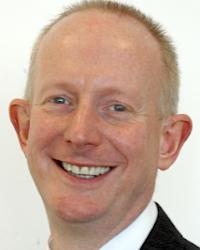
Prof David Bartlett
Professor David Bartlett is Head of Prosthodontics at Kings College London Dental Institute. David has published over 100 research publications, written 3 books, numerous chapters, grants in nearly...
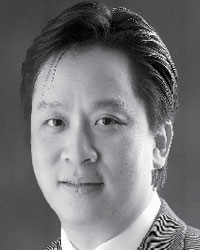
Dr Chatchai Kunavisarut
DDS, MS, Grad. Dip. In Clin. Sci. (General Dentistry)
Chatchai Kunavisarut received his DDS (with honors) from Prince of Songkla University, Thailand in 1994. He received his Master of Science in Prosthodontics from the University of North Carolina at...
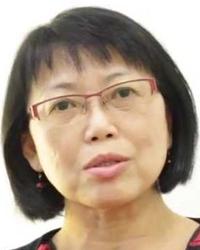
Dr Betty Mok
BDS (Singapore), MSc (London)Dr Betty Mok received her BDS degree from the National University of Singapore 1981 and obtained her MSc in Children’s Dentistry from the University of London in 1985. She joined the Faculty of Dent...
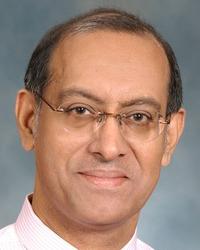
Dr Vijayan Loganathan
BDS (Singapore), MDS (Singapore), FAMS (Singapore)Dr Vijayan Loganathan graduated with the degree Bachelor of Dental Surgery from the University of Singapore in 1978 and earned his Master’s in 1982. He spent 20 years with the Ministry of Health and...
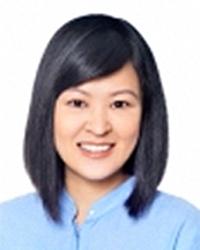
Ms Soon Lay Yong
RDH, MS
Soon Lay Yong, RDH, MS, DH/OHT is a Senior Lecturer teaching Dental Hygiene at Nanyang Polytechnic. Lay Yong received her Dental Hygiene education and training in Washington USA. She earned her Ass...












